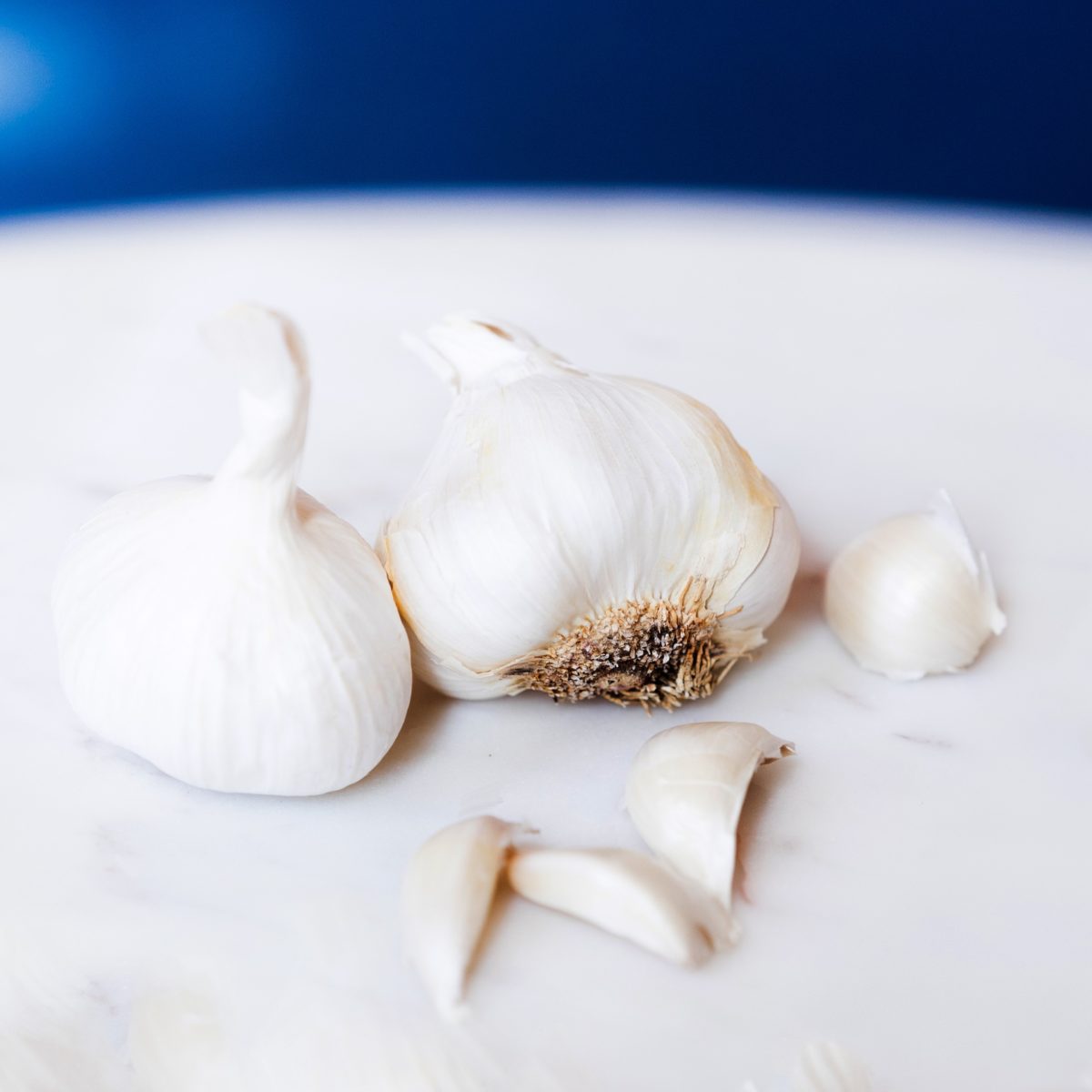
COMMON NAME (Chinese Name)
Garlic (Da Sua)
BOTANICAL NAME
Allium sativum
USES
Garlic bulb extract has a long history of therapeutic use in China, East Asia, and the Middle East. Indications for oral use include fever, flatulence, colic, and intestinal parasites. What’s more, the same plant variants and the same extraction processes have found uses in other cultures’ folk medicines, including as a topical treatment for eczema, acne, scabies (as well as to generally improve skin condition). Some of these anecdotal uses are well-supported by the current body of research concerning the effects (and side-effects) of garlic. There are over 13,000 citations on garlic in PubMed. For example, garlic bulb extracts have been proven to help reduce the colony-size of common intestinal parasites, and they make practical oral and topical treatments for bacterial infections (even when bacteria are drug-resistant) and for regulating gut bacteria.
Today, oral garlic supplements garner high praise even among the traditional medical community for their propensity to lower high blood pressure, which is similar to that of pharmaceutical blood pressure control medications. Additionally, oral garlic bulb extracts are scientifically-proven to prevent various heart diseases. However raw garlic has been shown to outpace dried supplements, especially for respiratory illnesses, although it causes gastric distress in some people.
Some novel uses for garlic bulb extracts and bulb-based supplements include the possible treatment of obesity in people following a high fat or otherwise imbalanced diet (people who take a long-term garlic supplement have demonstrated lower body mass than those taking placebo supplements). Additionally, garlic supplementation may have some notable antigenotoxic effects (diminishing the health consequences of exposure to certain carcinogens).
Garlic is categorized in Chinese medicine as an herb that kills parasites. It is classified as spicy and warm and goes to the Spleen, Stomach and Lungs. It is a food grade herb.
PREPARATION & ADMINISTRATION
Garlic can easily be used as a food supplement, eaten either raw or cooked, as a part of regular recipes. The minced clove of fresh garlic is the most potent form, both for respiratory and cardiac conditions. Other medicinal uses commonly call for creating extracts using the bulb of the garlic plant. Historically, these extracts have been aqueous — derived using hot water decoction — though today ethanol-based extracts may demonstrate greater potency in the treatment of certain conditions. Whether you choose to use water- or ethanol-based extracts, make sure you are following appropriate dosing recommendations for the type and concentration of extract you’re using.
PRECAUTIONS
There is scientific proof that garlic is one of the best disease-preventative supplements available. Nevertheless, empirical evidence has repeatedly shown that garlic bulb extracts and other supplements have significant impacts on blood clotting (including lengthening clotting time and reducing platelet aggregation) and blood pressure. Garlic supplements are likely safe for most people, though you should consult with a certified herbalist, physician or other qualified healthcare professional before taking garlic. People who have or are being medicated for clotting or bleeding conditions, or are taking blood thinners or blood pressure medication should make sure to note this when talking to their doctor before starting to use garlic supplements. There is a significant chance that garlic supplements will interact with medications for these conditions.
REFERENCES
Bayan, Leyla, et al. “Garlic: a Review of Potential Therapeutic Effects.” Avicenna Journal of Phytomedicine, Mashhad University of Medical Sciences, Jan. 2014, www.ncbi.nlm.nih.gov/pmc/articles/PMC4103721/.
Dini, Irene. “Spices and Herbs as Therapeutic Foods.” Food Quality: Balancing Health and Disease, Academic Press, 23 Feb. 2018, www.sciencedirect.com/science/article/pii/B9780128114421000146.
Filocamo, Angela, et al. “Effect of Garlic Powder on the Growth of Commensal Bacteria from the Gastrointestinal Tract.” Phytomedicine, vol. 19, no. 8-9, 2012, pp. 707–711., doi:10.1016/j.phymed.2012.02.018.
Karuppiah, Ponmurugan, and Shyamkumar Rajaram. “Antibacterial Effect of Allium Sativum Cloves and Zingiber Officinale Rhizomes against Multiple-Drug Resistant Clinical Pathogens.” Asian Pacific Journal of Tropical Biomedicine, vol. 2, no. 8, 2012, pp. 597–601., doi:10.1016/s2221-1691(12)60104-x.
Kuete, V. “Allium Sativum.” Medicinal Spices and Vegetables from Africa, Academic Press, 20 Jan. 2017, www.sciencedirect.com/science/article/pii/B9780128092866000157.
Gaafar, Maha Reda. “Efficacy of Allium Sativum (Garlic) against Experimental Cryptosporidiosis.” Alexandria Journal of Medicine, vol. 48, no. 1, Jan. 2012, pp. 59–66., doi:10.1016/j.ajme.2011.12.003.
Labu, Zubair & Rahman, Mustafijur. (2019). Proven Health Benefits of Garlic-A Review.
Morales-González, José Antonio, et al. “Garlic (Allium Sativum L.): A Brief Review of Its Antigenotoxic Effects.” Foods, vol. 8, no. 8, 2019, p. 343., doi:10.3390/foods8080343.
Radenkovic, Mirjana, et al. “Inhibitory Effect of Aqueous and Ethanolic Garlic (Allium SativumL., Lilliaceae) Extracts on the Rat Atria.” Clinical and Experimental Hypertension, vol. 32, no. 5, 2010, pp. 251–255., doi:10.3109/10641960903265238.
Ried, Karin, and Peter Fakler. “Potential of Garlic (Allium Sativum) in Lowering High Blood Pressure: Mechanisms of Action and Clinical Relevance.” Integrated Blood Pressure Control, 2014, p. 71., doi:10.2147/ibpc.s51434.
Wicks, Sheila M., et al. “Interactions of Commonly Used Prescription Drugs With Food and Beverages.” Sustained Energy for Enhanced Human Functions and Activity, Academic Press, 11 Aug. 2017, www.sciencedirect.com/science/article/pii/B9780128054130000284.
